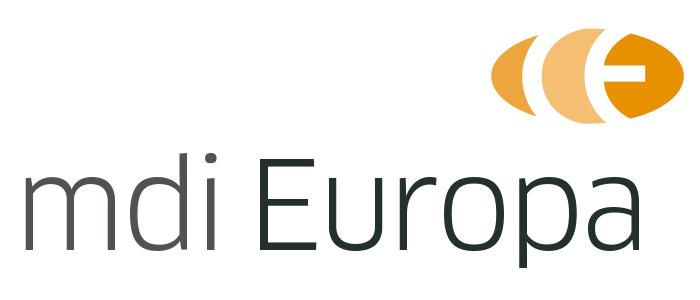Using literature for clinical evaluations was a common approach for setting up clinical evaluations under the MDD. This article discusses the new MDCG 2020-5 guidance document, which illustrates to what extent clinical data from equivalent devices may be used for clinical evaluations under the MDR.
Regulatory background for literature on equivalent devices in clinical evaluations
In April 2020, the Medical Device Coordination Group (MDCG) issued a set of guidance documents that are vital for manufacturers to comply with the clinical evaluation requirements under Regulation (EU) 2017/745 on medical devices (MDR). Document “MDCG 2020-5 Clinical Evaluation – Equivalence” takes a central role in this context.
As a general rule, the clinical evaluation process under the MDR allows for using clinical data from equivalent devices to support safety and performance claims. This approach is commonly referred to as “literature route”. The guidance states that in addition to clinical investigations, “clinical data can also be sourced from
- clinical investigation(s) or other studies reported in scientific literature, of a device for which equivalence to the device in question can be demonstrated,
- reports published in peer reviewed scientific literature on other clinical experience of either the device in question or a device for which equivalence to the device in question can be demonstrated”
This overall principle could already be used under the Medical Devices Directive (MDD) and MEDDEV 2.7/1, rev. 4. This new MDCG guidance document has been set up to provide advice how to appropriately claim equivalence in accordance with the MDR and what are the main differences between the MDR and MEDDEV 2.7/1, rev. 4 (in terms of equivalence).
Manufacturers must discuss technical, biological and clinical characteristics of a device to provide evidence on equivalence. In this context, MDCG 2020-5 makes clear what the specific requirements under the MDR are and in which aspects they differ from the MEDDEV 2.7/1, rev. 4 provisions. Under annex I of MDCG 2020-5 the MDCG suggests a table manufacturers may use to take all required characteristics into consideration.
If equivalence may finally be claimed, clinical data or literature respectively from that device may be used for the clinical evaluation.
If equivalence may finally be claimed, clinical data or literature respectively from that device may be used for the clinical evaluation. If equivalence may not be claimed and no own clinical data is available, other sources of data, e.g. performance data, may be used in the clinical evaluation process.
Conditions for using literature on equivalent devices in clinical evaluations
MDCG 2020-5 also discusses essential conditions for manufacturers to be able to claim equivalence. This article provides an overview of some of the most important points below. However, the list below is not complete and economic operators are highly advised to thoroughly review the entire document to make sure that their clinical evaluations fulfill the corresponding requirements:
- The equivalence discussion shall conclude whether the technical, biological and clinical characteristics (as per the MDR requirements) are similar in that no clinically significant difference in safety and clinical performance of the device exists. If this is not possible, manufacturers should draw up a gap analysis.
- Although a manufacturer may use several equivalent devices in its clinical evaluation process, the guidance document says that “equivalence to each device shall be fully investigated, described and demonstrated in the clinical evaluation report“.
- One of the applicable MDR articles for manufacturers of implantable and class III devices is 61(4). This article says that manufacturers must have set up a contract with the manufacturer of the equivalent device “that allows full access to the technical documentation on an ongoing basis”.
- For manufacturers of all other devices, the corresponding MDR article is 61(3). This article, in connection with annex XIV(3), requires “that the manufacturer shall have sufficient levels of access to the data relating to devices with which they are claiming equivalence”.
- If a manufacturer may not fully demonstrate equivalence to another device, the corresponding data may not be used for the actual evaluation of device safety and performance. However, data from similar devices where equivalence was not demonstrated, may still be used for several purposes, e.g. safeguarding an appropriate and complete risk management, defining the scope of the clinical evaluation or understanding the state of the art.
It is likely that predominantly clinical evaluations for class I medical devices need to be reworked to comply with the aforementioned requirements.
As indicated earlier, the overall clinical evaluation process does not change under the MDR. But it is likely that predominantly clinical evaluations for class I medical devices need to be reworked to comply with the aforementioned requirements. It is expected that competent authorities who are in charge of the supervision of these products will demand strict adherence to the MDR provisions.
Should you have any questions, please don’t hesitate to get in touch.
Sources: MDCG guidance documents
Accompanying this subject we recommend the following content on our website
- Browse our website by keyword guidance documents.
- Visit our Complete Download Section.
- Read our paragraph “Major aspects of the MDR”.
- Read our article “Most important changes on MDR“.
- Read our paragraph “Urgently Required MDR Guidance Documents for Clinical Evaluations and PMCF Published“.
- Read our article “New Checklist for Clinical Evaluations Available“.
- Read our paragraph “Why is a Clinical Evaluation so Important?“.





